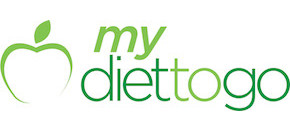Making Sense of Sodium
May 28, 2014
On average, Americans consume almost 4,000 milligrams (mg) of sodium a day. That’s a lot more than the U.S. Dietary Guideline that advises the general population to limit sodium to 2300 mg a day.
We asked Diet-to-Go's Registered Dietitian, Rebecca Mohning, MS, RD, LD, to help us put together an educational training video about sodium. In this short video (about 3 minutes), we will share some facts about sodium to help you make healthy decisions.
How to manage sodium to the U.S. Dietary Guidelines?
It isn’t enough to just avoid the salt shaker. Sodium sneaks into most of our food. Take bread, for example. One piece can have up to 230 milligrams of sodium, while a serving of turkey cold cuts can contain as much as 1,050 mg.
You can lower sodium by eating more fresh fruits and vegetables. One of our goals in preparing your Diet-to-Go meals fresh every week is to limit sodium content. Of course, the other reason is great taste!
Our preference for salt is actually learned. That is great news because it means that just like any other habit; we just need about 30 days to create a new habit or preference. After 4 straight weeks on a Diet-to-Go meal plan you will have reduced your sodium and calories so that you are losing weight and changing preferences that will improve your health long-term.
Here are a few more tips for adding flavor without adding sodium.- Season with herbs and spices
- Beware of spice blends that include salt in the ingredients
- Add a little balsamic or other vinegar
- Fresh garlic adds flavor
- Start with fresh vs. packaged ingredients
- Rinse canned foods 2 minutes to reduce the sodium
Nutrition Facts Labels
Be sure to pay close attention to food labels.
The labels on your Diet-to-Go meals are for all components of the meal. When you are snacking or preparing meals yourself, you have to add the sodium in all of the ingredients, including sodium heavy condiments. Here are a few more tips to help you interpret food labels:-
Be sure to check the serving size. That peanut butter might have only 130 mg, but that is for just 2 Tablespoons. If you use 6 on your sandwich, then you are up to 390 mg before adding in the sodium in your bread.
-
To include a sodium-free or salt-free claim on the label, there has to be 5 or less mg of sodium per serving.
-
No-salt added or unsalted does not mean sodium-free.
-
Look at the labels from different brands. Preparation, and sodium content, can vary widely.
Author: Kristen Ciuba
Kristen is a Nutritionist at Diet-to-Go, based in Lorton, VA. She tries to “practice what she preaches” by fitting in healthy foods and cooking, challenging exercise, and quality time with family and friends every day!




